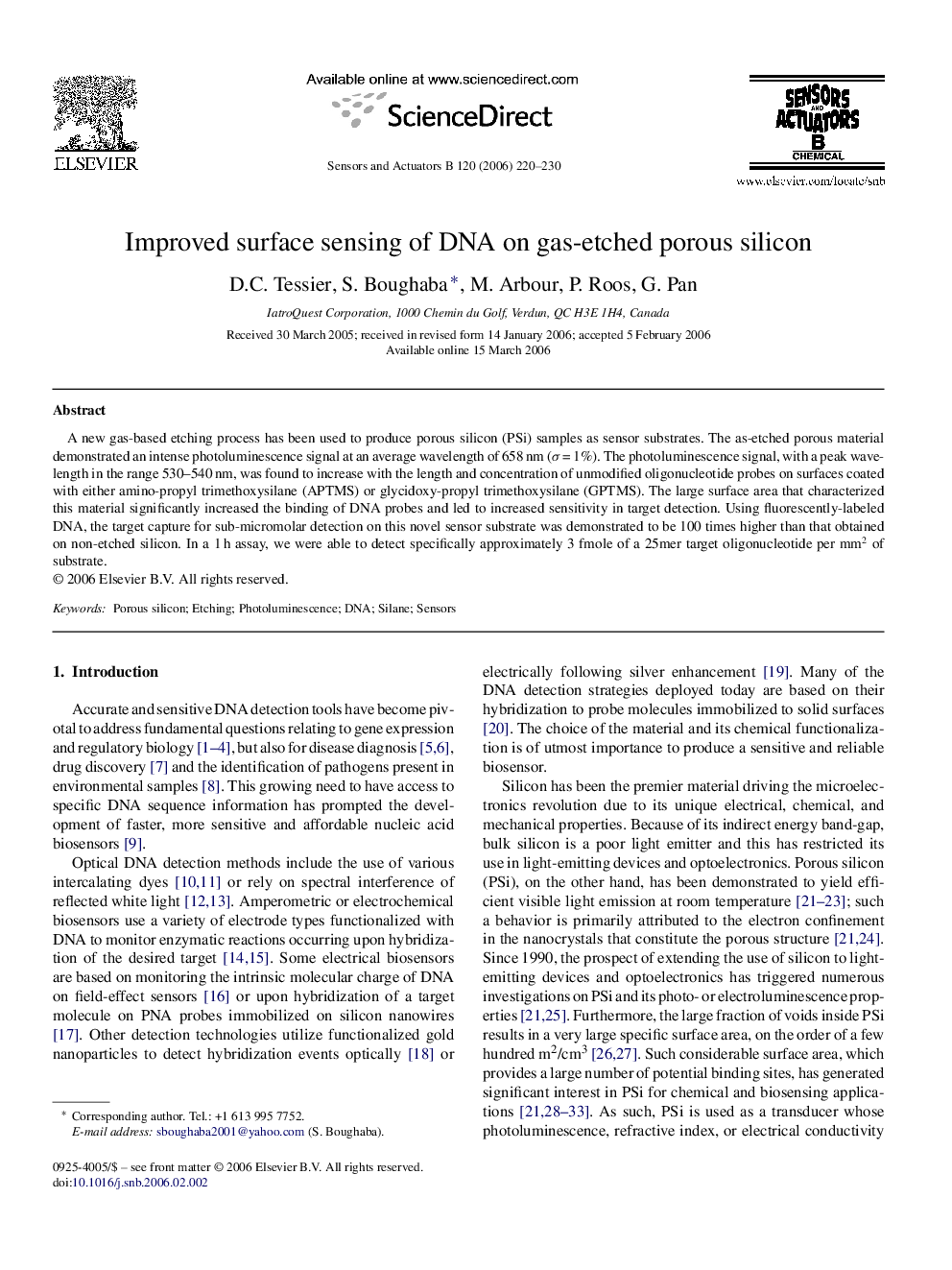| Article ID | Journal | Published Year | Pages | File Type |
|---|---|---|---|---|
| 744970 | Sensors and Actuators B: Chemical | 2006 | 11 Pages |
A new gas-based etching process has been used to produce porous silicon (PSi) samples as sensor substrates. The as-etched porous material demonstrated an intense photoluminescence signal at an average wavelength of 658 nm (σ = 1%). The photoluminescence signal, with a peak wavelength in the range 530–540 nm, was found to increase with the length and concentration of unmodified oligonucleotide probes on surfaces coated with either amino-propyl trimethoxysilane (APTMS) or glycidoxy-propyl trimethoxysilane (GPTMS). The large surface area that characterized this material significantly increased the binding of DNA probes and led to increased sensitivity in target detection. Using fluorescently-labeled DNA, the target capture for sub-micromolar detection on this novel sensor substrate was demonstrated to be 100 times higher than that obtained on non-etched silicon. In a 1 h assay, we were able to detect specifically approximately 3 fmole of a 25mer target oligonucleotide per mm2 of substrate.
